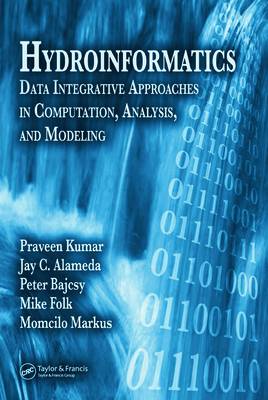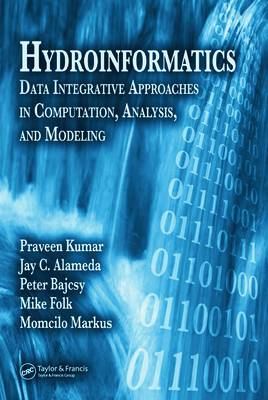
- Afhalen na 1 uur in een winkel met voorraad
- Gratis thuislevering in België vanaf € 30
- Ruim aanbod met 7 miljoen producten
- Afhalen na 1 uur in een winkel met voorraad
- Gratis thuislevering in België vanaf € 30
- Ruim aanbod met 7 miljoen producten
Zoeken
Hydroinformatics
Data Integrative Approaches in Computation, Analysis, and Modeling
Praveen Kumar, Mike Folk, Momcilo Markus, Jay C Alameda
Hardcover | Engels
€ 427,45
+ 854 punten
Omschrijving
Modern hydrology is more interdisciplinary than ever. Staggering amounts and varieties of information pour in from GIS and remote sensing systems every day, and this information must be collected, interpreted, and shared efficiently. Hydroinformatics: Data Integrative Approaches in Computation, Analysis, and Modeling introduces the tools, approaches, and system considerations necessary to take full advantage of the abundant hydrological data available today. Linking hydrological science with computer engineering, networking, and database science, this book lays a pedagogical foundation in the concepts underlying developments in hydroinformatics. It begins with an introduction to data representation through Unified Modeling Language (UML), followed by digital libraries, metadata, the basics of data models, and Modelshed, a new hydrological data model. Building on this platform, the book discusses integrating and managing diverse data in large datasets, data communication issues such as XML and Grid computing, the basic principles of data processing and analysis including feature extraction and spatial registration, and modern methods of soft computing such as neural networks and genetic algorithms. Today, hydrological data are increasingly rich, complex, and multidimensional. Providing a thorough compendium of techniques and methodologies, Hydroinformatics: Data Integrative Approaches in Computation, Analysis, and Modeling is the first reference to supply the tools necessary to confront these challenges successfully.
Specificaties
Betrokkenen
- Auteur(s):
- Uitgeverij:
Inhoud
- Aantal bladzijden:
- 552
- Taal:
- Engels
Eigenschappen
- Productcode (EAN):
- 9780849328947
- Verschijningsdatum:
- 2/11/2005
- Uitvoering:
- Hardcover
- Formaat:
- Genaaid
- Afmetingen:
- 181 mm x 263 mm
- Gewicht:
- 1156 g

Alleen bij Standaard Boekhandel
+ 854 punten op je klantenkaart van Standaard Boekhandel
Beoordelingen
We publiceren alleen reviews die voldoen aan de voorwaarden voor reviews. Bekijk onze voorwaarden voor reviews.











